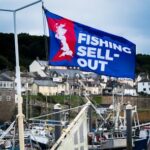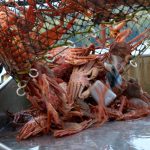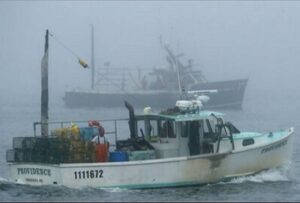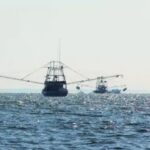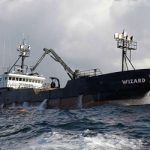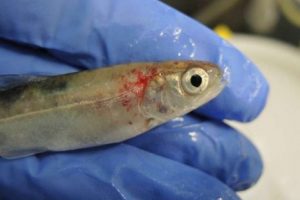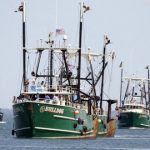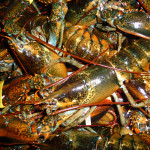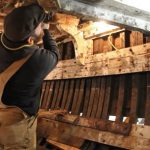Search Results for: Maine Reset
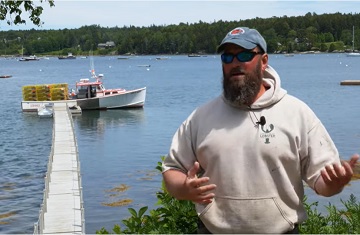
Save the Gulf of Maine –The Maine Reset, Ep6: Small Fish in a Big Sea
Sedgwick, ME Lobsterman Brian Tripp shares his story, what he loves about lobstering & what he is most concerned about for the future. MLA’s Patrice McCarron talks about the legal fight to protect Maine’s fishing heritage. >click to watch the video< – This Vimeo video, Like Skyrocketing Electric Bills? Then You’ll LOVE Offshore Wind! is Ep: 5, which wasn’t allowed on You Tube, >Click to watch<. It’s a rigged game, and we are the pawns. To see all the videos in this series, >click here< 10:52

Save the Gulf of Maine – The Maine Reset, Ep. 4: Never Forgotten
Derek Colbeth grew up lobstering, and then served for 5 years in the US Marine Corps. Now he’s a civilian again, but his heritage and livelihood is under attack on all fronts. Powerful interests are converging in a war against Maine Lobstermen. If Lobstermen lose this fight, Maine will never be the same. >Video, click to watch< 14:35
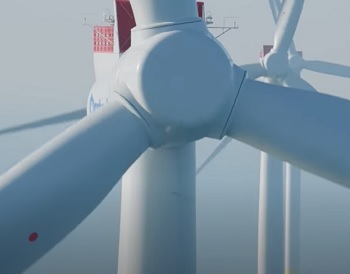
Save the Gulf of Maine – The Maine Reset, Ep.3: This is an Experiment
In this episode, interviews with two brilliant people that you won’t want to miss regarding offshore wind development in Maine. Carla Guenther PhD brings an oceanography perspective, and Long Island Commercial Fisherman Steve Train lays out some practical wisdom as only a fisherman can. Sandwiched in there are some of my own antics lampooning the empty suits from corporations who want to confiscate our ocean., >Video, click to watch< 13:15 ocean industrialization
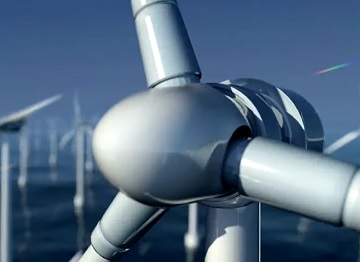
Save the Gulf of Maine – The Maine Reset Part 2, Fait Accompli?
First, we look at a basic chronology of the interplay between the State of Maine, the University of Maine, and private entities RWE Renewables and Diamond Offshore Wind (subsidiary of Mitsubishi) as they have joined forces in a venture of enormous importance. They partnered on a prototype of future wind turbines (Aqua Ventus I). Then they began working on an array of a dozen turbines. How many more turbines will follow? The wind developers have been clear that the first array is only the beginning of industrializing the Gulf of Maine. Then, we look in detail at some of the likely 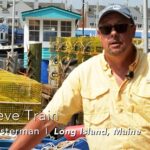 environmental impacts of industrial floating wind on marine life. It’s not a pretty picture. Yet, many large entities whose missions include protecting the environment have given ocean industrialization their blessing. Will they change their minds when they learn the full scope of impact? Video, Click to watch<, Watch the first episode, Road to Disaster – Voices of Maine Lobstermen >click to watch< 11:01
environmental impacts of industrial floating wind on marine life. It’s not a pretty picture. Yet, many large entities whose missions include protecting the environment have given ocean industrialization their blessing. Will they change their minds when they learn the full scope of impact? Video, Click to watch<, Watch the first episode, Road to Disaster – Voices of Maine Lobstermen >click to watch< 11:01
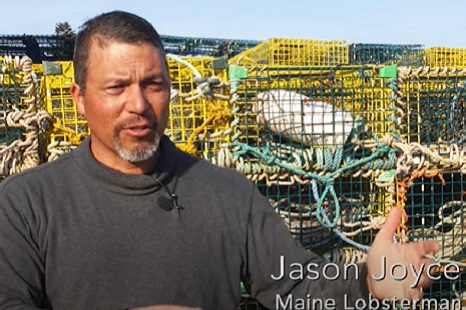
Video: Save the Gulf of Maine – The Maine Reset
Upcoming documentary scrutinizes plans to industrialize the Gulf of Maine and highlights the perspectives of the Mainers most affected. At the foreground of the conversation are Maine lobstermen. In later episodes, scientists and ecologists also weigh in. The result is a thought-provoking primer on an issue that could result in the fundamental transformation of the State of Maine. >click to watch<, 17:36 It’s only the beginning! You can support this project at www.igg.me/at/ProtectMaineWaters – Please, also watch the first video installment of >Road to Disaster – Voices of Maine Lobstermen, click here<
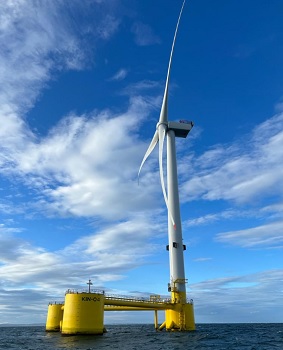
Leeman: Maine must hit pause on offshore wind turbines
You wouldn’t buy a house without an inspection, so why would we fill the Gulf of Maine with wind turbine superstructures without understanding how they interact with the marine environment? Offshore wind energy features too many unknowns to proceed at this point with widescale ocean industrialization. That’s why my organization, the New England Fishermen’s Stewardship Association (NEFSA) has joined with partner organizations to call on state and federal authorities to reset our renewable energy policy. The state of Maine is developing a floating offshore wind research array at a 15-square-mile site in the Gulf of Maine. >click to read< 08:17
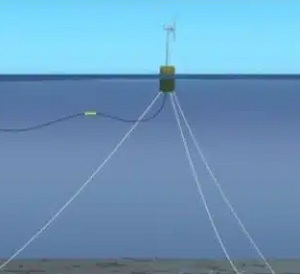
A lament of whales and windmills
So, today my wife and I went to a memorial service for Ms. Corrine Damon (a faithful servant of the Lord). A friend from church (Len Wolfe) asked if I would look into what is going on with the wind turbine generator site exploration and construction and its impacts on marine life and their habitats. Len was mainly concerned with the many Humpback whales washing up on the northeast coastal areas (especially around the New Jersey coastline). It affects the fisheries all the way up through Maine, and politics (and industry money) are the deciding factors in the equation. One website on Youtube named “Will Offshore Wind Harm Marine Life” by a group called “The Maine Reset” shows that some of the construction areas will have “Wind Farms” with as few as a dozen of these rigs set up (with these massive chains intertwined underneath each other). >click to read< 12:19
Jerry Leeman – Why it is wrong to assume anything
I’ll use this photo to prove a point. NOAA uses a computer to pick where their assessments on fish stocks will take place. Here lies the problem.
It’s in random spots, and they never make the same tow again at the same time of the year because they use a computer model that knows nothing of fishing. NOAA is taking the assumption that fish live everywhere. That’s pretty funny because if you knew anything about fishing at all, fish species don’t hang on every piece of bottom all day and night. They just don’t. Not only do fish have tails, but they also swim up into the water columns and travel with the feed and breeding cycles and changes of the seasons.
 This picture represents 846′ of water or 141 fathoms under the boat. The fish schools are clearly there, I’ve circled them. Now, depending on the tide high or low slack water or daylight verses nighttime, the schools will come to bottom or go up in the water. Making a random tow for 20 minutes and moving on tells you nothing unless you stay the course in this area for at least 24 hours and even then, time of year and lunar cycles play a big part as well. These fish can come down to the bottom at any given time depending on what they are feeding on. Making a quick 20-minute random tow actually tells you nothing.
This picture represents 846′ of water or 141 fathoms under the boat. The fish schools are clearly there, I’ve circled them. Now, depending on the tide high or low slack water or daylight verses nighttime, the schools will come to bottom or go up in the water. Making a random tow for 20 minutes and moving on tells you nothing unless you stay the course in this area for at least 24 hours and even then, time of year and lunar cycles play a big part as well. These fish can come down to the bottom at any given time depending on what they are feeding on. Making a quick 20-minute random tow actually tells you nothing.
That type of knowledge comes with experience. NOAA uses this method to make assessments on stocks. Which after what I just explained, doesn’t make sense at all. It doesn’t work. Not only that they, don’t come back every year at the same time and make the same tow again, so how would you ever know if fish stocks were increasing or decreasing? They are literally making false assumption guesses and regulating on false assumptions while pushing corrupt agendas.
Remember, fish have tails and there is no written rule for fish having to stay along the bottom.
Twenty years ago, there were over 400 active fishing vessels in New England today, maybe seventeen. It’s not overfishing, folks, its corrupt data pushed by inexperienced science teams who I have no real problem with, but the management teams running this circus are corrupting the narratives with false information damning the working men and women who harvest our ocean. We could do real research with science teams and get much more accurate assessments on our fish stocks, but you need experience.
Meanwhile the data research ships make no effort to make any tows along the Maine coast. I’ve talked with many lobstermen and fishermen across New England, and I would be happy to talk with a lot more. Along the shore boats are seeing these small hake and codfish that if listening to NOAA do not exist or they can’t find them.
If you’ve been reading my posts, I have literally been spelling it out on a silver platter. But they won’t do the research or even look. Why would you suppose they’d not? Big green wind energy wants an offshore wind farm here in the Gulf of Maine and they want to run power cables that put off electrical magnetic pulses to the land.
Maines coast is a nursery for fish stocks, lobsters and clams and all varieties of marine life. You know, the fish they say are not there because of false and corrupt data. If you don’t know what you’re looking at it’s very easy to screw up an assessment. As I said before, NOAA wants to reduce haddock in the Gulf of Maine by 80% next year because they can’t find juvenile fish, but by placing these cables along the bottom you very well could wipe out entire fish stocks to never return and changing fish breeding cycles from small juvenile groundfish to tuna fish.
Not only that, increasing boat traffic will endanger the North Atlantic right whales from ship strikes. Meanwhile, killing the economy and way of life for thousands along the New England seaboard. Our politicians and the general public have been led astray from the real truth. It’s time to talk to the real men and women on the sea level and get real data with real knowledge plugged into the science.
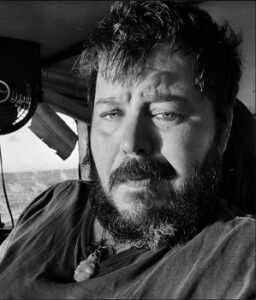 I’m willing to educate you with everything I’ve learned in my life on the water. All fishermen and lobstermen are here to help educate the masses and keep a sustainable ocean clean and harvestable for generations to come. This offshore wind farm green will destroy the Gulf of Maine and the men and women who respectfully harvest our greatest treasure. The sea is the bringer of life. It’s time to get on board reset the true heading and get this ship on course. Many blessings to you all. Please share people need to hear the real truths. FISH ON MY FAMILY AND FRIENDS, Jerry Leeman
I’m willing to educate you with everything I’ve learned in my life on the water. All fishermen and lobstermen are here to help educate the masses and keep a sustainable ocean clean and harvestable for generations to come. This offshore wind farm green will destroy the Gulf of Maine and the men and women who respectfully harvest our greatest treasure. The sea is the bringer of life. It’s time to get on board reset the true heading and get this ship on course. Many blessings to you all. Please share people need to hear the real truths. FISH ON MY FAMILY AND FRIENDS, Jerry Leeman
Department of Labor to Accept Unemployment Applications from Self Employed and Others May 1
April 28, 2020
AUGUSTA – The Maine Department of Labor will begin accepting applications for the new Pandemic Unemployment Assistance (PUA) at 8 a.m. Friday, May 1. People whose claim does not require further review should begin receiving benefits within seven days of filing.
Pandemic Unemployment Assistance is a new federal program which expanded eligibility for unemployment benefits to certain categories of workers not typically able to receive unemployment in the past, such as:
Self-employed workers
Farmers/Fishermen
Independent contractors
Nonprofit employees not already covered by regular state unemployment benefits
Gig economy workers
Workers who do not have enough work history and earnings to be eligible for traditional unemployment benefits
Others who have been determined ineligible for regular unemployment benefits
“These uncertain times have been particularly difficult for our small businesses and self-employed Mainers. I know that waiting for unemployment benefits has been a challenge for many, but help is on the way,” Commissioner Laura Fortman said. Standing up a completely new unemployment program is complex, and our team worked diligently to get this done. The final federal guidelines were received last night, and I am pleased to announce that we will begin accepting PUA applications later this week. People whose claim doesn’t require further review should begin receiving benefits within seven days from filing. All claims will be retroactive to the date of business closure or job separation provided on the application, back until March 15. If work was lost earlier than that due to COVID-19, claimants will be able to provide documentation to show that in the near future.
Claimants filing for PUA will be asked to self-attest to their earnings in either 2018 or 2019 when they file their claim. The federal Office of the Inspector General has advised that this program will be subject to rigorous audits, and so the Department asks that claimants provide accurate information to the best of their ability.
PUA benefits start at 50% of the average weekly state unemployment benefit for self-employed and those who do not meet monetary eligibility for regular unemployment. This is $172/week. If you are self-employed, once we are able to verify documented earnings, PUA benefits will be adjusted retroactively. The maximum benefit available under PUA is $445/week.
In addition, anyone who receives a PUA benefit also receives the full $600 additional weekly benefit from the Federal Pandemic Unemployment Compensation (FPUC) program, which is available through July 25, 2020. Claimants will also need to file a certification every week in order to receive benefits.
To expedite the benefits process, claimants are not required at this time to send the Department paper or electronic copies of documents showing their earnings. The Department will let claimants know later in May when these documents should be uploaded to finalize their claims.
Claimants under PUA should do the following:
No action needed – Claimants who have been denied unemployment benefits due to not having enough earnings to qualify for state benefits do not need to reapply. Their claim in the system will automatically process.
Claim must be updated – Those who are self-employed and who attempted to file for unemployment benefits before PUA was implemented must log-in to their online unemployment account and update their claim with their self-attestation of earnings.
Claim must be filed – All others eligible for PUA but who had yet not filed a claim will should visit https://www.maine.gov/unemployment/ and fill out the new streamlined application form for PUA. Submit your weekly certification each week thereafter.
More information on PUA and instructions on how to apply can be found on MDOL’s website: https://www.maine.gov/unemployment/pua/ .
Since March 15, the Department has paid out benefits to over 70,000 people, totaling about $200 million dollars.
Those with a question about their existing claim can leave a message at https://www.maine.gov/labor/contact/ , or call 1-800-593-7660. Those who are locked out of their account because they need their password reset should live-chat with a CareerCenter at https://www.mainecareercenter.gov .
The Department of Labor continues to implement solutions to the challenges created by the sudden and unprecedented levels of questions and claims to meet the needs of Maine people. Claims staff are working extended hours, as well as on Saturdays and holidays, to process applications and contact claimants.
The Department has also contracted with a Maine-based call center to provide claims assistance. About 100 people are answering calls, up from 13 a month ago. The online unemployment system is performing as designed and is available 24/7.
The Department of Labor recommends that people file their claims online, using a computer as opposed to a smartphone, if possible. The Department has also implemented an alphabetical call in schedule to help reduce phone line congestion to manage capacity to receive and process claims.
Claimants with last names beginning with A-H should call on Monday, I-Q on Tuesday; and R-Z on Wednesday. Thursday and Friday are available for those who miss their alphabetical day or need to call at that time.
To apply for unemployment: https://www.maine.gov/unemployment 1-800-593-7660 between 8 a.m. and 3 p.m. Monday-Friday
For password resets and basic questions through a CareerCenter: https://www.mainecareercenter.gov/locations/index.shtml
For more information and resources, visit the Departments COVID-19 page: https://www.maine.gov/labor/covid19/


































